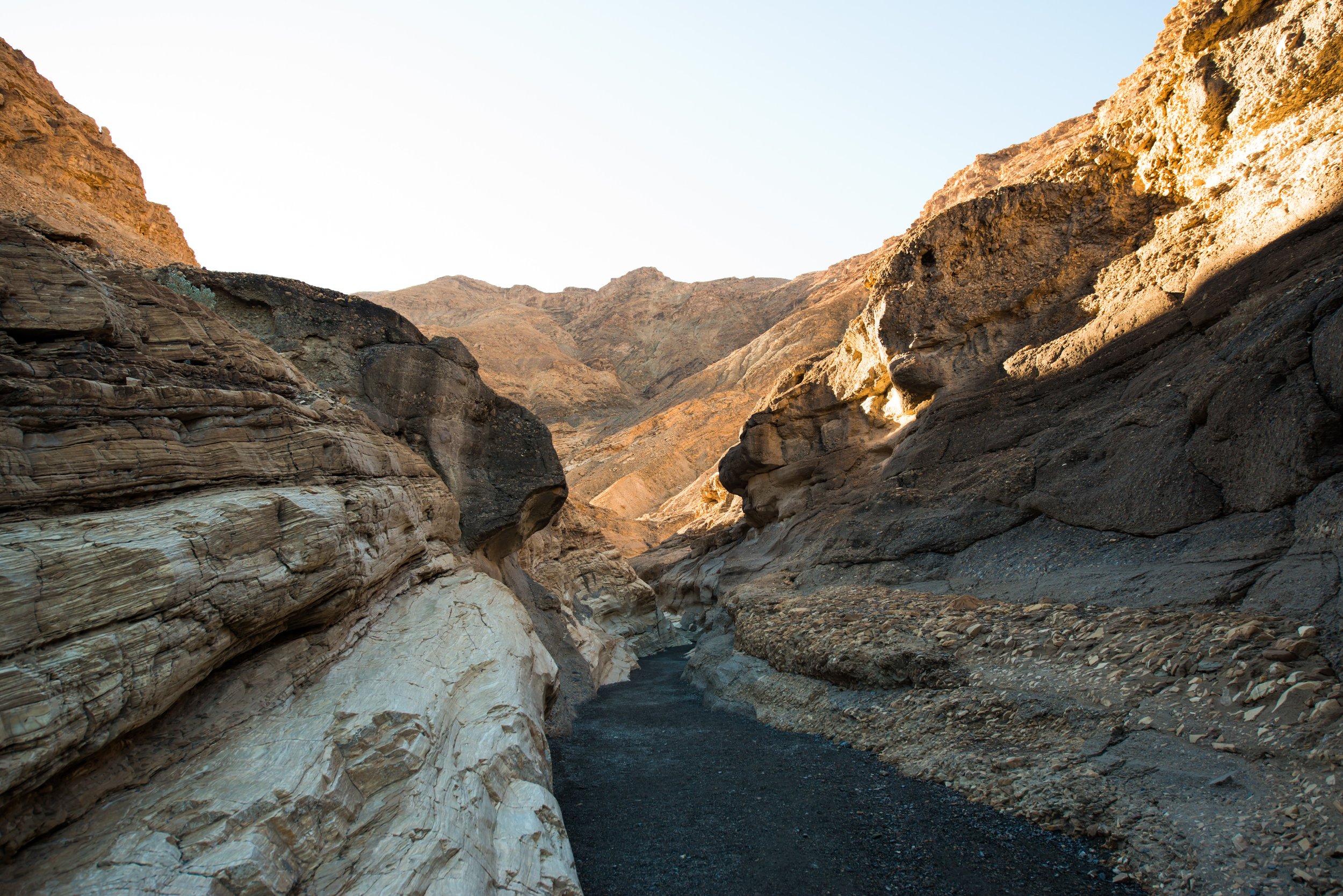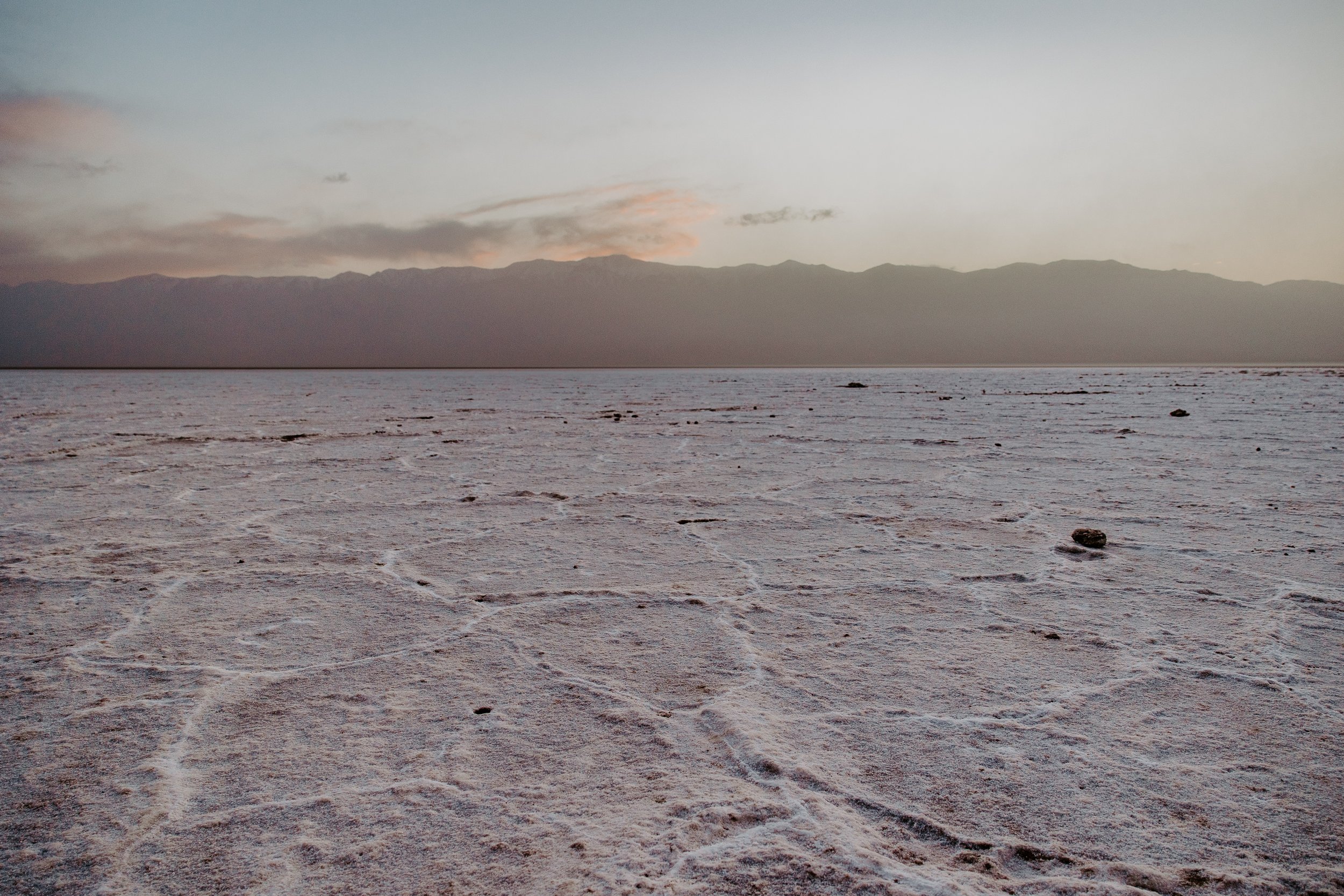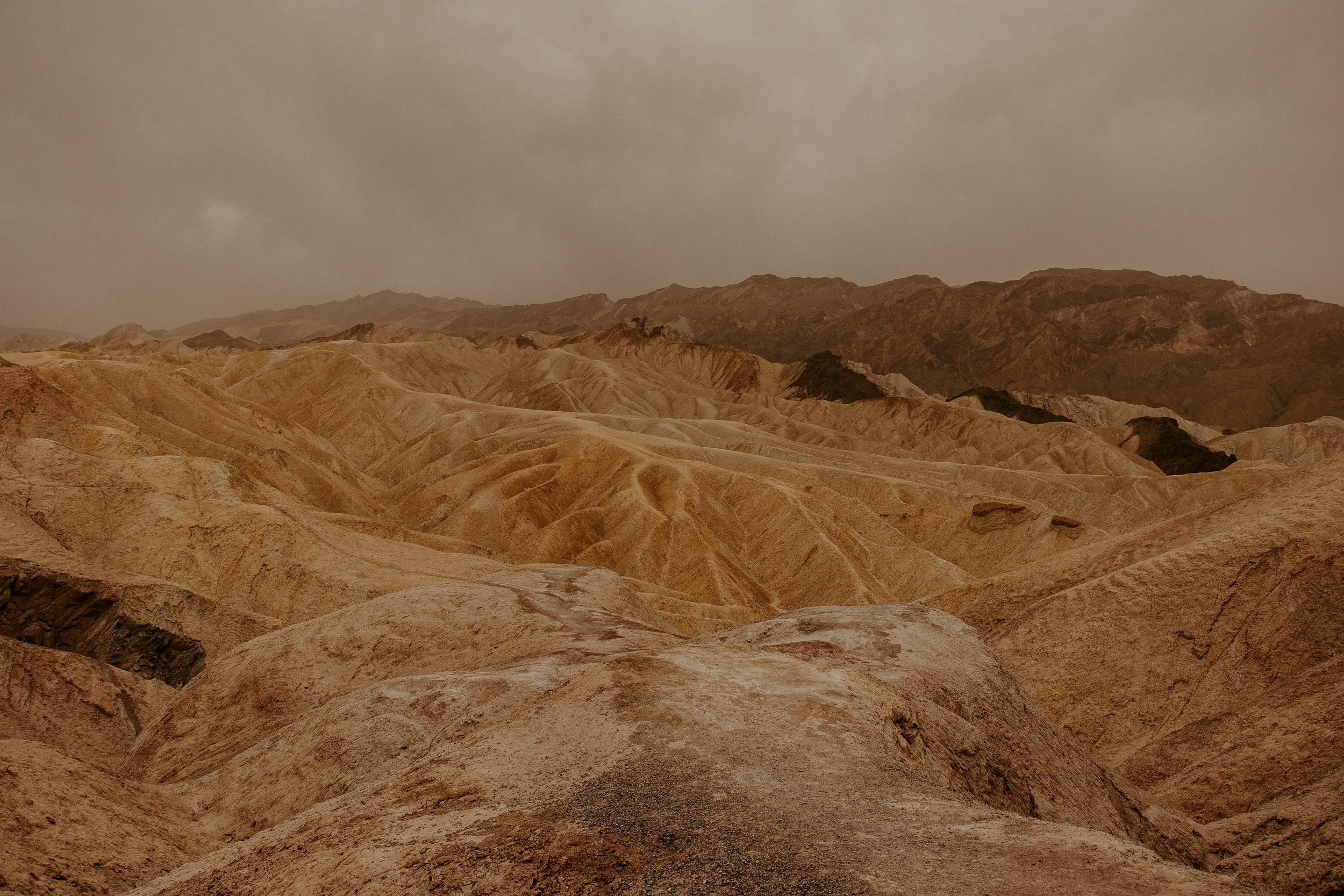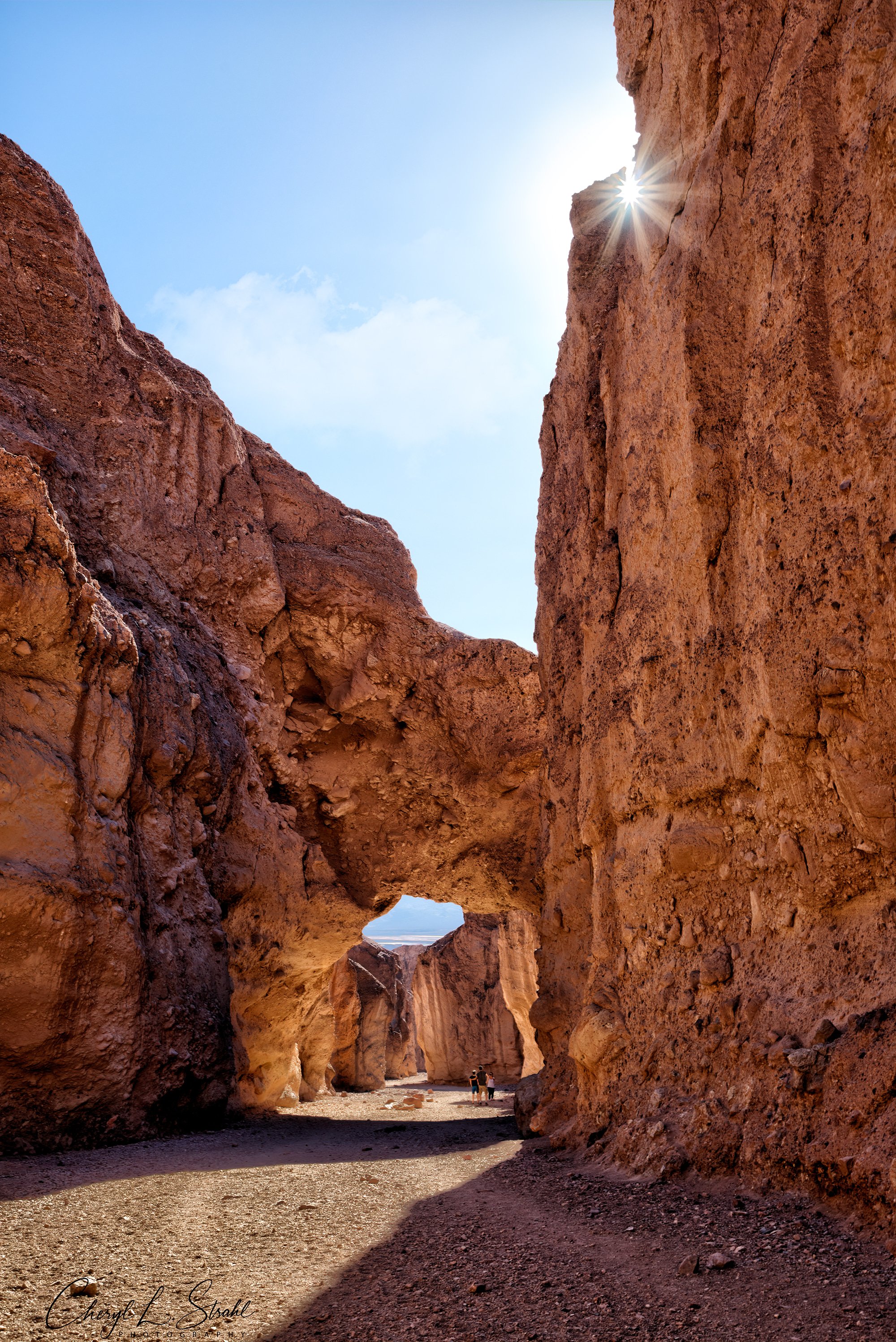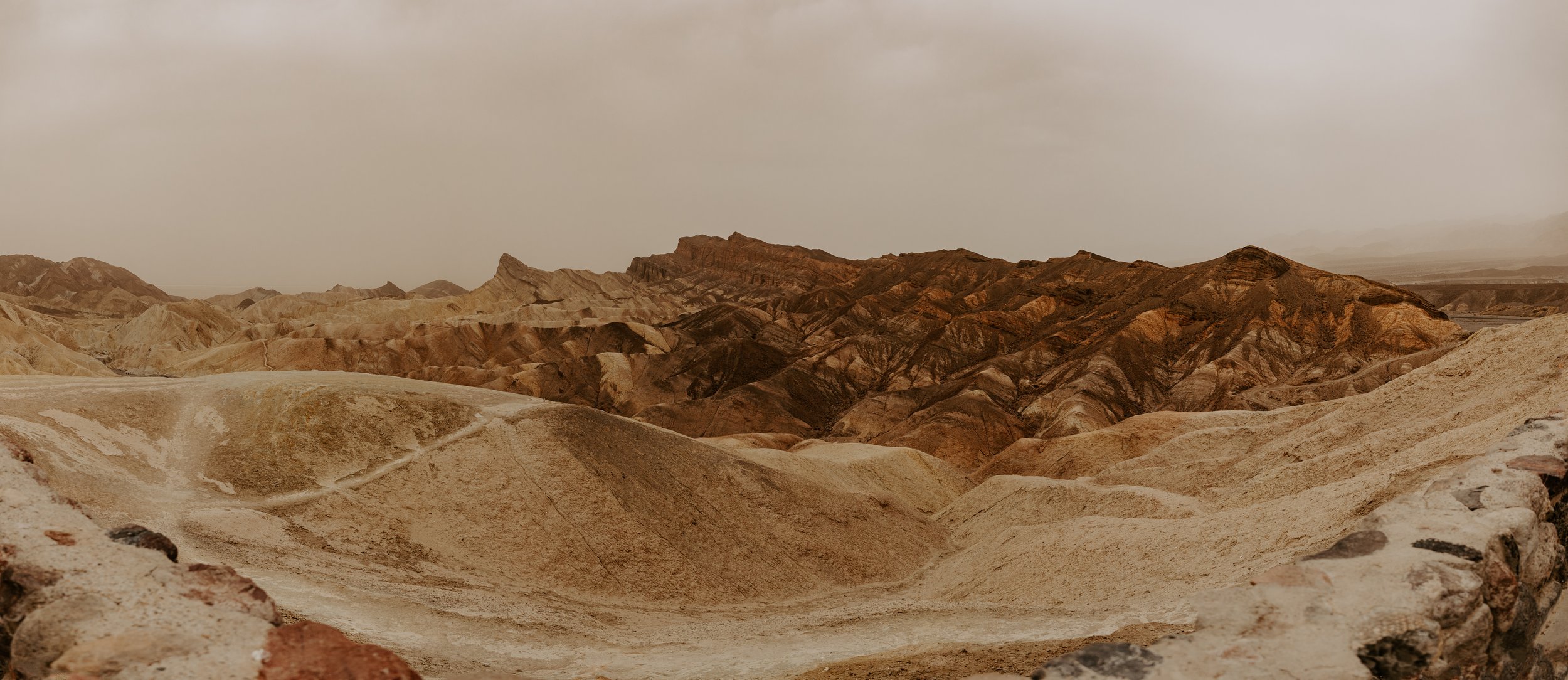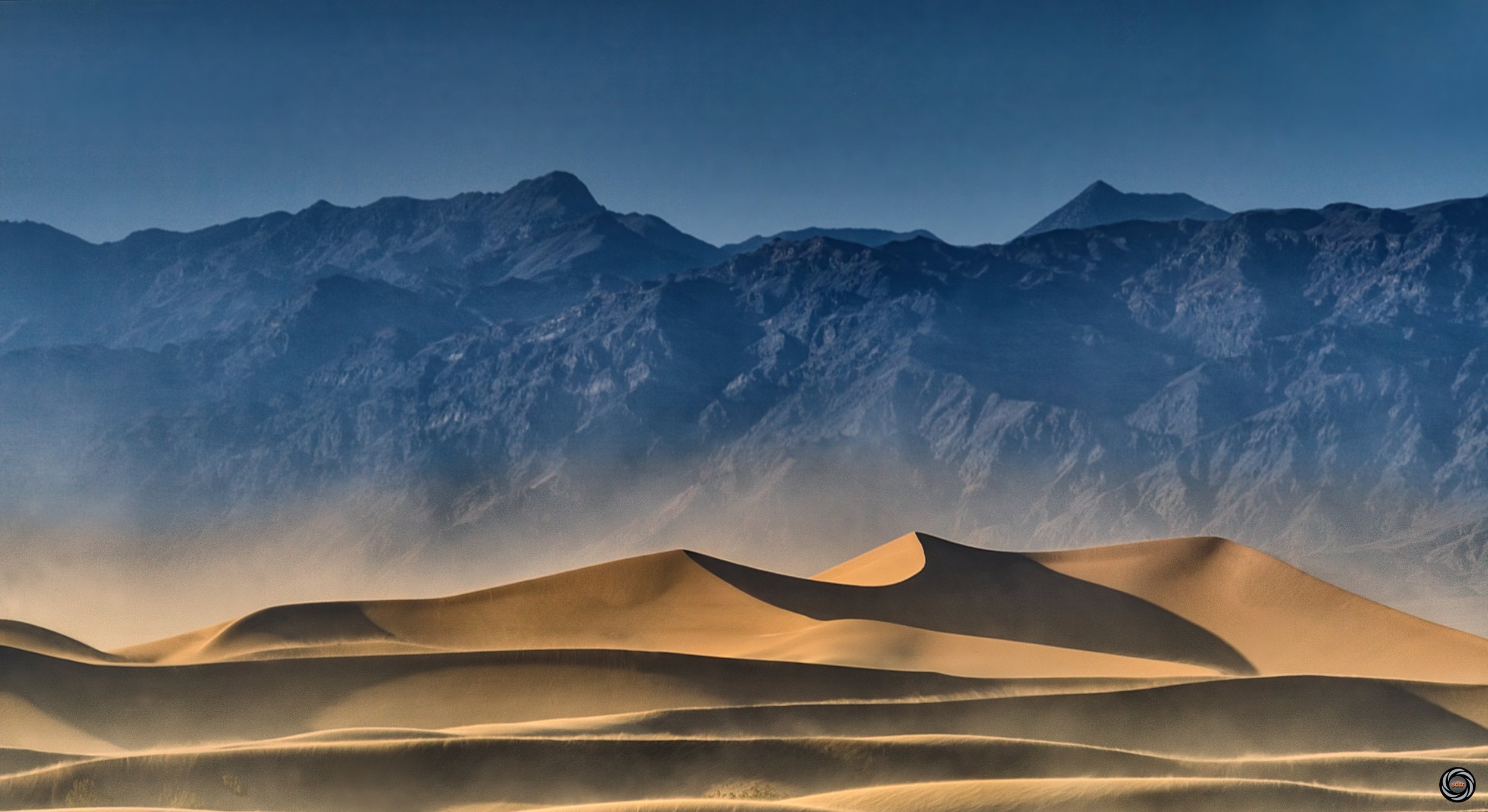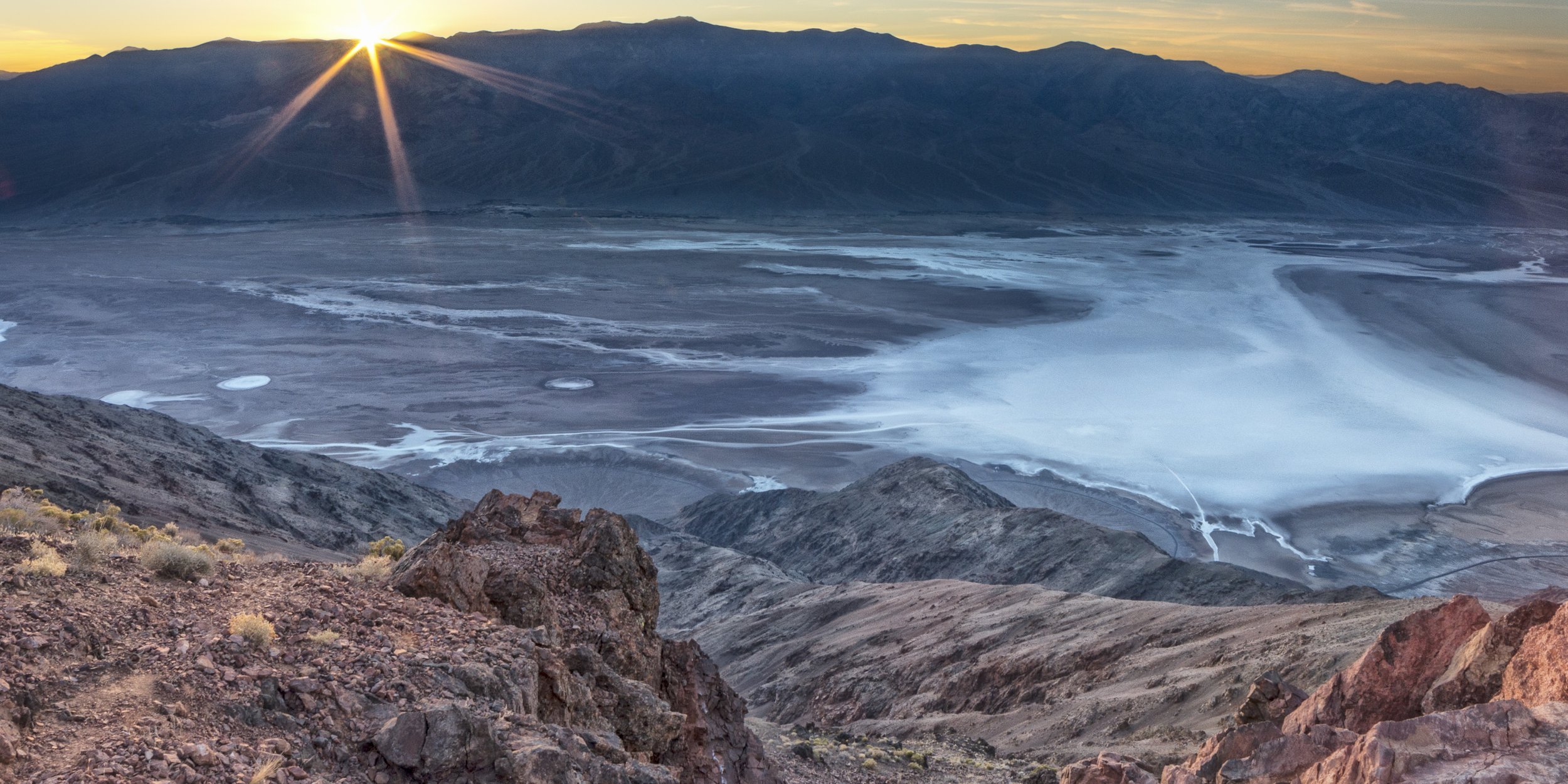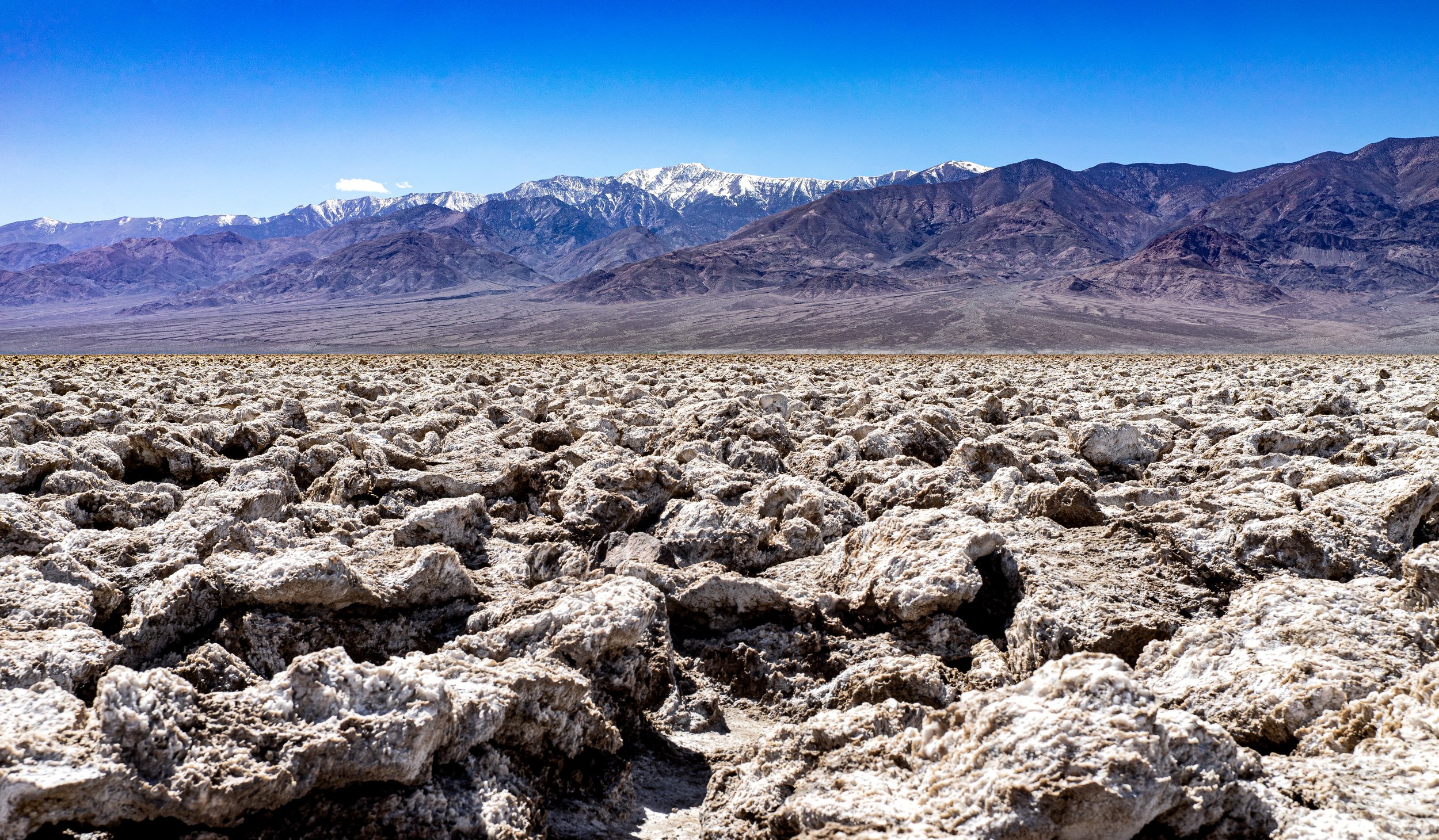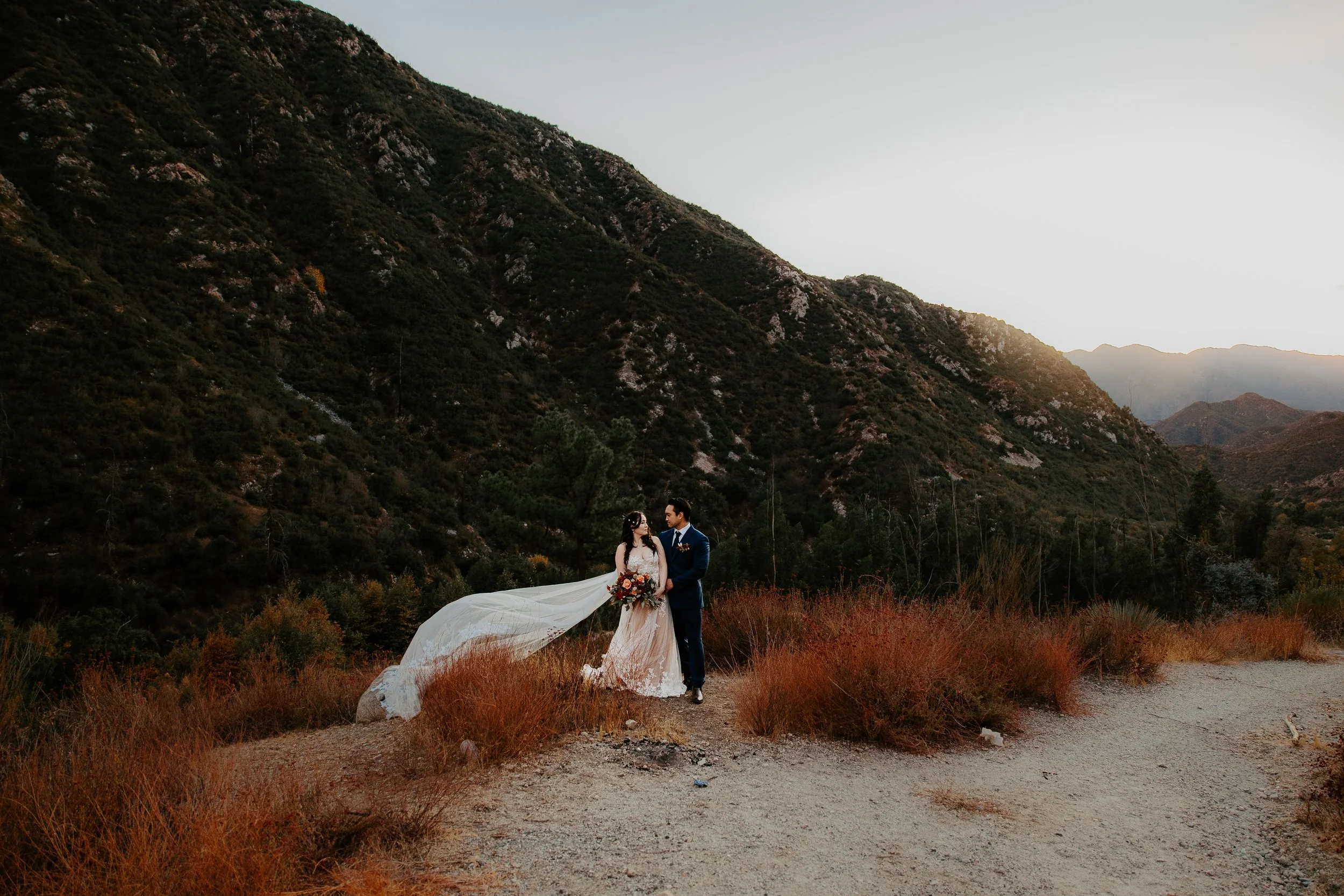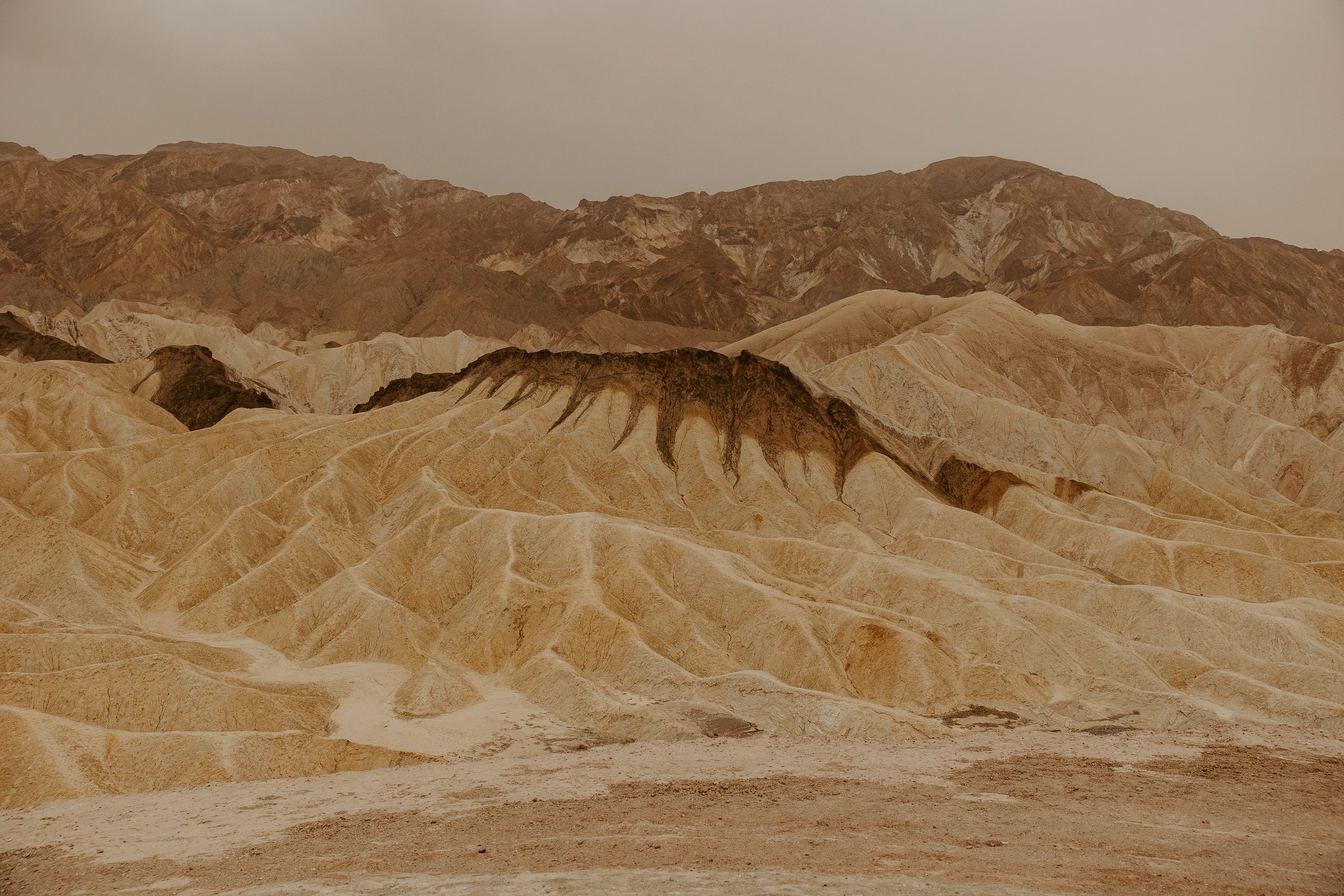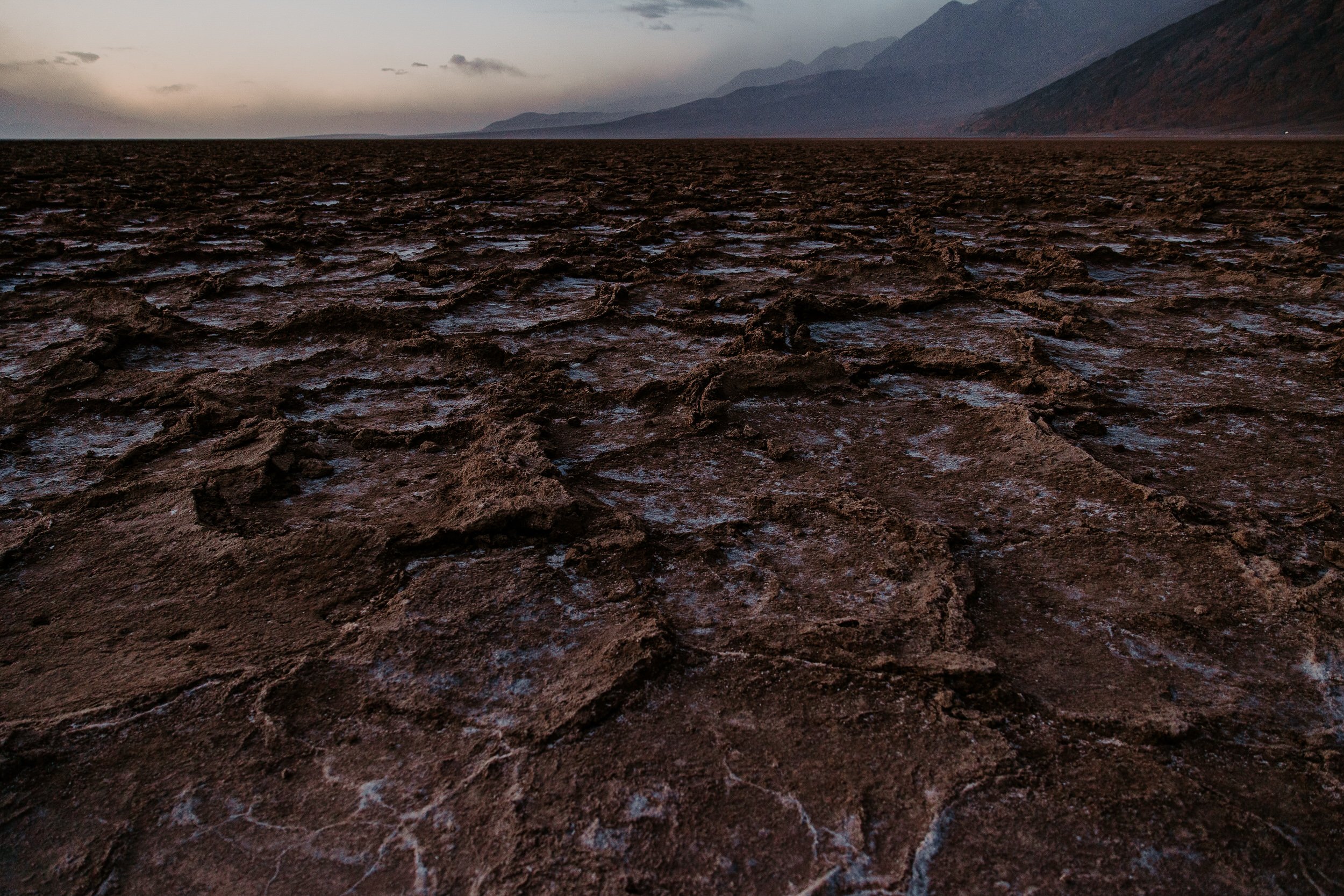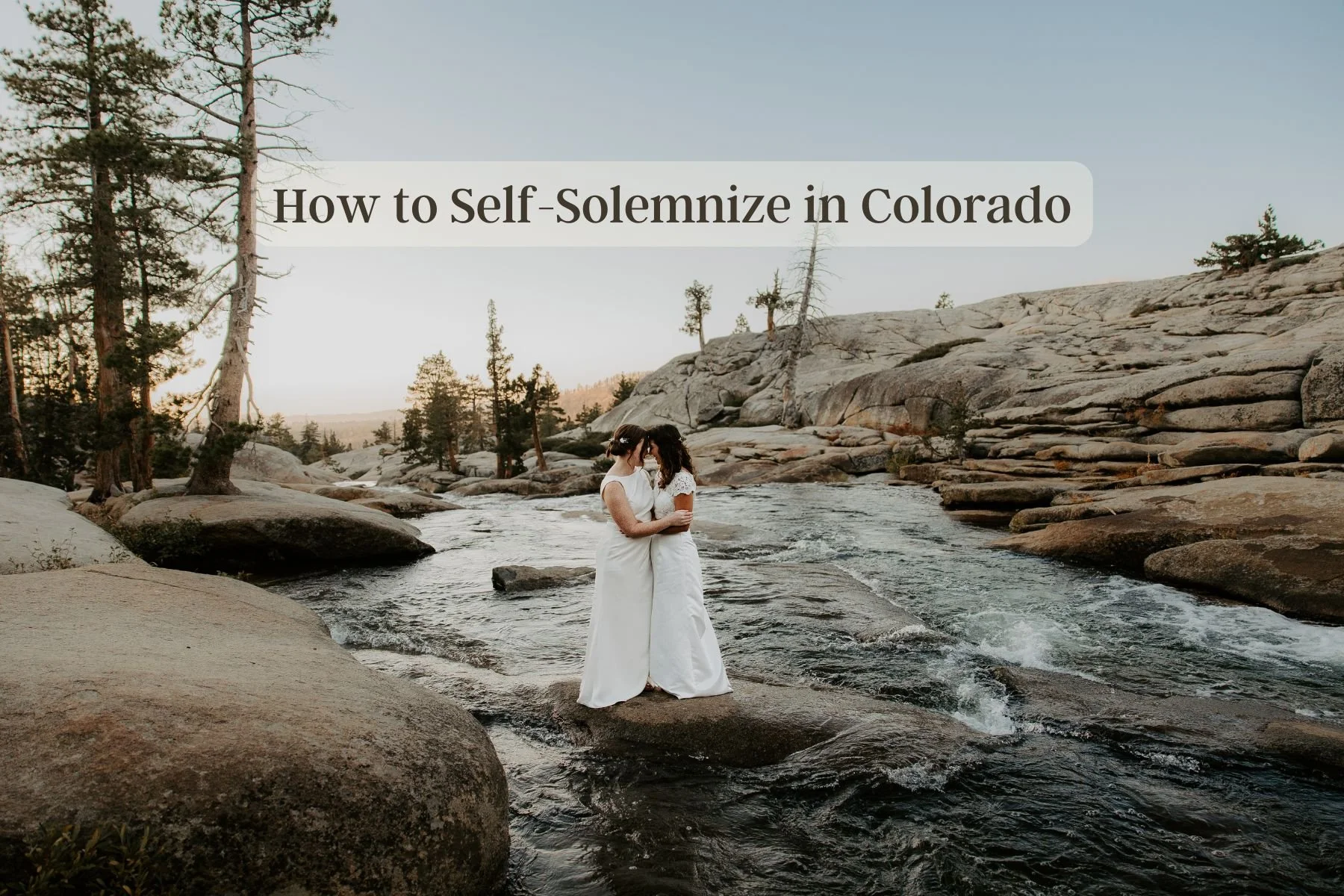Death Valley Elopement Guide
Nestled in Eastern California, Death Valley is an example of Earth’s extremes. Known for being North America's lowest, hottest, and driest place, this iconic landscape captivates adventurers and couples alike. From the surreal Badwater Basin, to the record-setting temperatures of 1913, Death Valley beckons bold lovers seeking a unique and untamed experience for their elopement. In this guide, we will discuss all things Death Valley and everything you need to know about eloping here.
What is Death Valley and Why is It So Famous?
Death Valley, located in Eastern California bordering the Great Basin Desert, is known for being the lowest, hottest, and driest spot in North America.
The valley is home to Badwater Basin, the second-lowest point in the Western Hemisphere and the lowest in North America, sitting 282 feet below sea level. It’s also famous for recording the highest surface temperature documented on Earth, which was 134°F on July 10, 1913.
As the largest national park in the contiguous United States, it covers around 3,000 square miles, providing diverse landscapes, including salt flats, dunes, canyons, mountains, oases, and seasons of vibrant wildflowers.
Why is it Called Death Valley?
During the California Gold Rush in the mid-1800s, a group of pioneers lost their way in a valley characterized by extreme heat, dehydration, and hardship. This inevitably resulted in the death of some of the group members. However, once the surviving members were able to leave the valley, it’s said that one in particular looked back and said, "Goodbye, Death Valley," encapsulating the horrendous experience in just 3 words. After a while of the story being shared, the name eventually stuck.
The name originated from the ill-fated group, the Bennett-Arcan Party, in 1849. Sources include the National Park Service's historical accounts and multiple historical documents recounting the California Gold Rush era.
When was Death Valley National Park Established?
Death Valley National Park was established as a national monument in 1933 and expanded by Congress to protect its natural and cultural resources. It officially became a national park on October 31, 1994.
Animals at Death Valley National Park
Death Valley is home to many animals that have adapted well to the severe desert environment. Some notable species that thrive here include desert bighorn sheep, tortoises, coyotes, roadrunners, kit foxes, bobcats, and kangaroo rats. However, the most famous animal of Death Valley is The Death Valley pupfish, which is a small and rare fish species that can only be found in two locations within the Death Valley National Park. Despite the harsh conditions, the pupfish can survive in hot, cold, or salty water and feed on algae and diatoms. Male pupfish turn bright blue during the mating season, which lasts from April to October. This fish species is a remnant of a larger ecosystem that existed thousands of years ago when Death Valley was a lake. If you’d like to see the pupfish, you can visit Salt Creek. However, please note that their habitat is fragile, and visitors must refrain from touching the water and going off of walkways.
It is important to note that sighting specific animals in Death Valley can be challenging and may vary depending on various factors, such as their behavior, seasonal changes, and the park's sheer size. However, couples exploring the right areas, especially during early morning or dusk, might have better luck spotting animals like the desert bighorn sheep and certain reptiles. On the other hand, animals like coyotes, kit foxes, and bobcats are more elusive, and sightings are less common.
How to Get to Death Valley
Las Vegas
Sequoia National Park
Zion National Park
Closest Airports
Las Vegas McCarran Airport (LAS): about 140 miles and 2-2.5 hours drive time
Burbank Bob Hope Airport (BUR): about 160 miles and 3-3.5 hours drive time
Inyokern County Airport (IYK): about 70 miles and 3 hours drive time
There are some small airports within Death Valley, such as Furnace Creek Airport (DTH) and Stovepipe Wells Airport (L09), that are only accessible for private planes and do not offer any ground transportation or car rental options.
Why Elope in Death Valley National Park
Death Valley is one of the most diverse and dramatic national parks in the US, with landscapes ranging from colorful hills and salt flats to dunes and cinematic mountain peaks. As the largest, driest, and hottest park in the U.S., it offers adventurous couples a sense of solitude away from traditional settings. Popular elopement sites like Artist Palette, Zabriskie Point, and Badwater Basin cater to various themes. Accessibility from nearby airports, accommodations both within and outside the park, a straightforward permit process costing $300, and a mild climate from October to April further make Death Valley an ideal, affordable, and unique elopement destination.
Not sure Death Valley is the perfect match for your day? California has endless landscapes to explore. Take a peek at my California Elopement Guide for more incredible elopement locations.
Where to Elope in Death Valley National Park
Locations
Airbnbs
Jurassic Park Hideaway in Alabama Hills:
This modern house is on six acres of private land, surrounded by rock spires and desert views. It is pet-friendly and has a two-floor design with a rooftop patio, a bathroom, a kitchen, and a second-floor bedroom. The house is 10 minutes from downtown Lone Pine and a 40-minute drive to the Death Valley entrance.
Emerald City Castle Airbnb with Stargazing Lair:
This luxurious castle residence is surrounded by 40 acres of private land and is located northeast of the park. It combines classical, Viking, and medieval architectural elements with a touch of The Wizard of Oz. The castle features a panoramic tub and a stargazing deck with views of Area 51.
The Desert Gold Airbnb is a secluded house in Beatty, Nevada, about 20 miles from the Death Valley National Park. This Airbnb has been highlighted in multiple publications for its artful design and features a rooftop patio with a hammock and a telescope. The house is surrounded by 80 acres of private land that couples can use and explore during their stay.
Venues
This resort offers stunning panoramic desert views with flexible meeting spaces, outdoor settings, and catering services for weddings and elopements of varying styles and sizes.
This private ranch provides an authentic Old West atmosphere for your elopement. You can exchange vows in a chapel, a barn, or a private desert location and enjoy horseback riding, rodeo, and other Western activities.
This cabin and campground is in Sequoia National Park, around 93 miles from Death Valley. Its charming rustic vibe provides views of the forest and snow-capped peaks and offers different wedding venues, including a ballroom, terrace, and pavilion.
When is the Best Time to Visit Death Valley?
Spring
During springtime, the Death Valley's desert comes alive with wildflowers that contrast beautifully against the otherwise muted hues of the desert. The temperature ranges from mild (70-90°F) to warm (100°F), and the valley becomes popular during its superbloom, attracting visitors worldwide.
Summer
During the summer, Death Valley experiences scorching temperatures with extreme highs of around 120°F or more. The landscape consists of earth tones, primarily yellows, browns, and reds. Despite the intense heat, it remains a popular destination for extreme adventurers and fewer tourists due to its challenging conditions.
Fall
In fall, Death Valley experiences temperatures in the 70s-90s°F with cooler nights. The landscape showcases subtle color changes, with various desert plants blooming. The park's popularity also peaks in early fall due to milder weather.
Winter
In winter, Death Valley ranges from 60-70°F, occasionally dropping lower at night. The landscape adopts soft earthy tones with accenting greenery after occasional rainfall, especially in higher elevations. Its popularity remains steady among tourists because of this ideal time to explore the park's diverse terrain without extreme heat.
How Much Does it Cost to Elope in Death Valley?
-
Marriage License - $52
3 Night Airbnb Stay - $500
Photographer - $3500
Florals - $300
Wedding Dress - $500
Suit - $200
Hair & Makeup - DIY
Dinner Celebration for 2 - $200
Total: $5,552
-
Special Use Permit - $300
Marriage License - $843
4 Night Airbnb Stay - $2000
Photographer - $9500
Florals - $1000
Wedding Dress - $5000
Suit - $1000
Onsite Hair & Makeup - $1000
Private Chef - $1000
Total: $21,643
Current Specials for Death Valley Bookings
What Does a Death Valley Elopement Look Like?
An elopement in Death Valley offers many scenic options and themes for couples. Color palettes can vary between vibrant reds, oranges, and yellows, contrasting white salt flats and the earthy tones of sand dunes. Couples can also explore themes of rustic desert chic, including cacti and succulents, to an elegant and bold elopement against sweeping mountains.
Death Valley Elopement Itinerary Examples
Below, you’ll find a few different examples for an elopement timeline. No elopement timeline will truly be the same as each couple decides to plan their day differently. Because there are so many options when planning your elopement, your timeline will be unique to your day. But, the examples will help give you an idea of what to expect from yours.
-
6:30am | Sunrise.
8:00am | Breakfast at Greta’s Cafe in Beatty, NV.
10:00am - 12:00pm | Hair & Makeup.
12:15pm | First look at Airbnb.
1:30pm | Get your passport stamped at the Visitor Center.
2:00 - 2:30pm | Have a quick bite to eat at a picnic table.
2:45 - 4:25pm | Cruise Artists Drive and Explore Artist Palette.
4:45 - 5:45pm | Sunset Portraits & Exploring at Badwater Basin.
5:30pm | Sunset.
5:45 - 7:00pm | Dusk Champagne toast & Stargazing at Badwater Basin.
-
6:30 - 7:30am | Get ready together at your AirBnB in Vegas.
7:30am | Check Out of Airbnb, Head into Death Valley.
10:30am | Visit with Pupfish at Salt Creek.
11 am - 3:30pm | Drive nearly 1,000 miles of paved and dirt roads throughout the park and explore more primitive locations such as the racetrack.
3:30pm | Say your vows in a more primitive, secluded location away from the crowds
4:45 - 5:45pm | Sunset at Dante’s View.
7:00 - 8:00pm | Campfire Dinner at Furnace Creek Campground.
6:00 - 6:45am | Sunrise at Mesquite Flat Dunes.
7:45 - 9:45am | Hike to Darwin Falls.
11:00am | Lunch in Lone Pine, CA.
12:00 - 3:00pm | Explore Alabama Hills.
Get Inspired by California Elopements
Death Valley Elopement Checklist
An all in-one, comprehensive guide on how to elope. From an iceberg in Alaska to a boat deck in the Florida Keys, this guide will give you all the steps on how to plan your perfect elopement day.
Things to Consider When Planning
Where do you want to get ready?
Preparing for your elopement day is crucial as it sets the tone for the entire day. The first thing you'll be doing is getting ready, which is why you should carefully consider how you want to approach it. You'll need to decide whether you want to get ready together or separately, in the same location but in different rooms, or in completely different areas. It's important to choose a comfortable space where you can get ready without any distractions. I always suggest a clutter-free area with lots of windows, natural light, and minimal fluorescent lighting.
How do you want to spend your morning?
Do you want to sleep in? Make pancakes together in the kitchen? Walk to a local coffee shop? Maybe you want to wake up in time to watch the sunrise.
Do you want to do a first look?
When it comes to having a first look on your wedding day, the choice is entirely yours. You can decide to have it or skip it altogether. If you do choose to have a first look, think about where you'd like to have it. Would you prefer to have it in the backyard of your Airbnb or drive separately to a nearby location.
Are you comfortable doing a long hike to a location?
When deciding on a location for your ceremony, consider the distance and amount of time you would like to spend hiking. Would you prefer to drive to the location, take a short 2-mile hike, or spend most of your day immersed in nature on a day hike to your ceremony site?
Do you want your ceremony in the morning or evening?
Lighting plays a significant role in your elopement day timeline. Your ceremony is the highlight of your day, and your photographer will want to ensure the best time for your ceremony to capture the best images.
Are there multiple locations you’d like to go?
If you are planning to have an Airbnb and a ceremony location for your elopement, you may also want to explore other nearby places. For instance, if you are eloping in Page, you will be close to several locations such as Horseshoe Bend, Antelope Canyon, and Lake Powell. You can consider having your wedding portraits taken at one location while having your ceremony at another. This way, you can have a diverse range of landscapes in your photos on your elopement day.
What’s the travel time?
When deciding on locations, it's important to consider the time it will take to travel from one location to another, as well as the time required to find parking and walk to your destination. Allow yourself some extra time in your travel plans in case it takes longer than expected to find parking or if you encounter unexpected traffic. This will help avoid any unnecessary stress or delays.
Do you want portraits at sunset, sunrise, or both?
I highly recommend taking portraits during sunrise or sunset since this time of day offers the best lighting. You can capture a beautiful golden glow and the soft colors of the sun as it sets or rises, which reflects on the landscape around you.
Are there any traditions that you’d want to incorporate?
If you're planning to elope, you may think that you have to forego certain wedding traditions. However, this is false, and you can include any traditions that are important to you.
What kind of reception and ceremony activities do you want?
After exchanging your vows, it’s time to celebrate. Whether you choose to celebrate alone or with a small group, it's important to mark the occasion. You could visit a local brewery and enjoy a beer, stop at an ice cream parlor and share a cone, or return to your Airbnb and celebrate with a bonfire and champagne. Whatever you decide, the most important thing is to celebrate this special moment in your unique way!
How to Elope in Death Valley National Park
Obtain a Special-Use Permit:
Email DEVA_Permits@nps.gov your completed application a minimum of 30 days in advance.
After the office receives your application, they will send you information on how to pay the non-refundable application fee.
Once you have paid your fee, a permit containing the relevant terms and conditions will be sent to you. The permit should be signed by the person responsible and returned to the park for final approval by the Park Superintendent before starting the permitted activity.
Purchase a Marriage License:
Decide which county you want to get your license from. The closest counties to the park are Inyo County in California and Nye County in Nevada.
Check the requirements and fees for each county. Inyo County charges $52 for a public license and $84 for a confidential license, while Nye County charges $60 for either license.
Fill out the online application form for the county of your choice. You can find the links on the county websites.
Visit the county clerk’s office with your photo IDs and payment. You can make an appointment online or by phone.
Receive your marriage license on the same day. You can use it anywhere in the state of issuance within 90 days
California’s Marriage License Options
Two types of marriage licenses are commonly issued in California: public marriage licenses and confidential marriage licenses. Here are some of the main differences between them:
A confidential marriage license can only be used in the county where it was issued; a public marriage license can be used anywhere in California.
A public marriage license requires at least one witness to sign the license, but a confidential license doesn't require any.
A public marriage license is a record available to the public. In contrast, a confidential marriage license is only available to the couple.
A marriage license is a legal document required to get married. In most states, there are two types of marriage licenses: public and confidential. A public marriage license is available to anyone at least 18 or with parental and judicial consent. On the other hand, a confidential marriage license is only available to couples at least 18 years old and living together as spouses.
Public marriage licenses are often suitable for couples who want legal or personal recognition, as they could help with immigration, inheritance, or social recognition. Confidential marriage licenses are ideal for couples who want privacy or security as they can help them avoid unwanted publicity, harassment, or identity theft.
Death Valley Elopement Packages
All elopement packages include:
All Travel Fees (prices don’t change per location!)
Customized Location Options
Permit Assistance
Personalized Vendor Options
Activity Suggestions Unique to You
An Elopement Timeline
Every elopement gallery includes high-resolution digital images with printing rights and a private online gallery to view, print, download, and share with your family and friends to relive the day with you - forever!
4 Hour ~ $3500
This package is perfect for couples who want a simple elopement experience. It includes getting ready, a short hike to the ceremony location, and couples portraits.
8 Hour ~ $5500
This package is perfect for couples who want to spend a day of adventure together, such as a long hike, off-roading, or visiting multiple locations. It's great for capturing the complete story of your elopement day. Typically, couples who are eloping and want to document their day for their friends and family who couldn't attend will choose this package. It's also ideal for couples bringing their friends and family along and would like to have their reception captured. Your reception could be as simple as having pizza with your loved ones or as elaborate as a private chef serving a three-course meal during a rehearsed dinner.
12 Hour ~ $7500
This package is perfect for couples wanting complete elopement coverage. It offers the ultimate storytelling experience, from waking up and having coffee with your partner to roasting marshmallows on a fire after sunset. This is an ideal option for couples looking to document their entire day with their guests included. Couples eloping alone also select this package to document every detail for their loved ones at home.
Multi-Day ~ $9500
Perfect for couples wanting a multi-day experience with a lot of adventure. This package is best if you want to elope in one epic location and also experience another epic location the following day. An example would be eloping at Artists Point in Death Valley and hiking to Death Valley’s waterfall, Darwin Falls the following day.
What to do in Death Valley National Park
Hiking
Backpacking
Road & mountain biking
Guided tours such as nature walks, patio talks, and night programs.
Drive the scenic Artists Drive
Explore the park at night
Self-guided Star Wars driving tour
Backcountry driving
Catch sunrise at Mesquite Flat Sand Dunes or sunset at Badwater Basin
Where to Stay When Visiting Death Valley National Park
Camping near Death Valley
Camping in Death Valley National Park is a great way to enjoy its breathtaking scenery and landscapes, with 12 campgrounds ranging from developed to primitive and low to high elevation.
If you're planning to camp near the park's main attractions and want facilities like water, toilets, and trash removal, you can choose from any of the nine developed campgrounds in the park. Furnace Creek, Texas Springs, and Sunset are the most popular campgrounds located in the park's central part. Furnace Creek is the only campground that takes reservations from October to April, while the others are available on a first-come, first-served basis.
If you prefer camping in a more isolated and rugged environment, you can choose one of the three primitive campgrounds within the park. These are only accessible via unpaved roads that require high clearance 4x4 vehicles and have no services or facilities available. Therefore, you must bring water and pack all your trash. The primitive campgrounds are located in the northern and western parts of the park and are named Mesquite Spring, Wildrose, and Emigrant.
If you prefer to camp in a more developed campground that provides additional amenities and services like showers, laundry facilities, and hookups, you can select from two private campgrounds within the park. These campgrounds are The Oasis at Death Valley and Stovepipe Wells Village Hotel, found in the central and northern regions of the park, respectively.
To camp in the backcountry, you must obtain a free permit from the park. You can camp anywhere in the park, as long as it is at least one mile from any paved road and 200 yards away from any water source, trail, or cultural site. Additionally, you must follow the park's rules and regulations, which include using a portable stove, leaving no trace, and respecting the wildlife.
When camping in Death Valley, it's important to remember that a camping fee will be required regardless of which campground you choose. The fee varies from $0 to $36 per night, depending on the campground and the season. Additionally, it's crucial to be prepared for the weather as it can vary greatly depending on the elevation and time of year. To have a comfortable experience, it's best to camp between the months of October to April when temperatures are more moderate.
Hotels near Death Valley
This is a luxurious 5-star hotel located within the park. It offers an outdoor pool, sauna, fitness center, restaurant, and bar.
This is a 3-star hotel located within the park. It offers an outdoor pool, tennis court, garden, terrace, restaurant, and bar.
This is a modern and spacious hotel located 37 miles away from the park entrance. It offers an outdoor pool, hot tub, casino, restaurant, and bar.
Holiday Inn Express & Suites Pahrump:
This is a cozy and clean hotel located 60 miles away from the park entrance. It offers a continental breakfast, fitness center, business center, and laundry facilities.
Beyond the towering sand dunes and expansive salt flats, this national treasure is home to unique love stories. Whether exchanging vows on the hues of Artist Palette or the vistas of Dante's View, an elopement in Death Valley is something so unique it cannot be replicated.
Ready to Plan Your Death Valley Elopement?
Nothing makes a statement quite like eloping in North America’s most barren and unforgiving landscape. That’s why I’m here to help the brave and lucky couples that choose to run away here, together, to get lost in the sand, dance in the sun, and stare up at the stars. Are you bold enough to choose Death Valley for your elopement destination? ‘Cause I’m waiting for ya.

